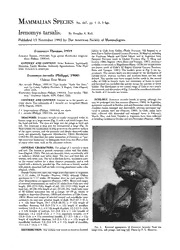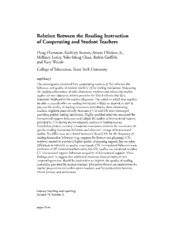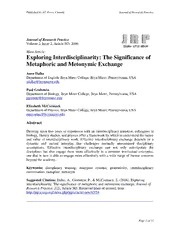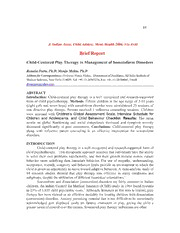
Dynamical Zeta Functions and Dynamical Determinants for Hyperbolic Maps PDF
Preview Dynamical Zeta Functions and Dynamical Determinants for Hyperbolic Maps
Ergebnisse der Mathematik und ihrer Grenzgebiete, 3. Folge A Series of Modern Surveys in Mathematics 68 Viviane Baladi Dynamical Zeta Functions and Dynamical Determinants for Hyperbolic Maps A Functional Approach Ergebnisse der Mathematik und Volume 68 ihrer Grenzgebiete 3. Folge A Series of Modern Surveys in Mathematics EditorialBoard L.Ambrosio,Pisa V.Baladi,Paris G.-M.Greuel,Kaiserslautern M.Gromov,Bures-sur-Yvette G.Huisken,Tu¨bingen J.Jost,Leipzig J.Kolla´r,Princeton G.Laumon,Orsay U.Tillmann,Oxford J.Tits,Paris D.B.Zagier,Bonn Forfurthervolumes: www.springer.com/series/728 Viviane Baladi Dynamical Zeta Functions and Dynamical Determinants for Hyperbolic Maps A Functional Approach VivianeBaladi IMJ-PRG CNRSandSorbonneUniversite´ Paris,France ISSN0071-1136 ISSN2197-5655(electronic) ErgebnissederMathematikundihrerGrenzgebiete.3.Folge/ASeriesofModernSurveys inMathematics ISBN978-3-319-77660-6 ISBN978-3-319-77661-3(eBook) DOI10.1007/978-3-319-77661-3 LibraryofCongressControlNumber:2018943138 MathematicsSubjectClassification:37C30,37D20,37D35 ©SpringerInternationalPublishingAG,partofSpringerNature2018 Thisworkissubjecttocopyright.AllrightsarereservedbythePublisher,whetherthewholeorpartof thematerialisconcerned,specificallytherightsoftranslation,reprinting,reuseofillustrations,recitation, broadcasting,reproductiononmicrofilmsorinanyotherphysicalway,andtransmissionorinformation storageandretrieval,electronicadaptation,computersoftware,orbysimilarordissimilarmethodology nowknownorhereafterdeveloped. Theuseofgeneraldescriptivenames,registerednames,trademarks,servicemarks,etc.inthispublication doesnotimply,evenintheabsenceofaspecificstatement,thatsuchnamesareexemptfromtherelevant protectivelawsandregulationsandthereforefreeforgeneraluse. Thepublisher,theauthorsandtheeditorsaresafetoassumethattheadviceandinformationinthisbook arebelievedtobetrueandaccurateatthedateofpublication.Neitherthepublishernortheauthorsor theeditorsgiveawarranty,expressorimplied,withrespecttothematerialcontainedhereinorforany errorsoromissionsthatmayhavebeenmade.Thepublisherremainsneutralwithregardtojurisdictional claimsinpublishedmapsandinstitutionalaffiliations. Printedonacid-freepaper ThisSpringerimprintispublishedbytheregisteredcompanySpringerInternational PublishingAGpartofSpringerNature. Theregisteredcompanyaddressis:Gewerbestrasse11,6330Cham,Switzerland Preface On July 9, 2001, Springer invited me to contribute a monograph on dynam- ical systems. I immediately accepted, offering to write a book on dynami- cal zeta functions and dynamical determinants: Dynamical determinants are functions defined from weighted periodic orbit data of a differentiable dy- namical system. The zeroes of these functions describe a large part of the spectrum of an associated transfer operator. In other words they play the role of Fredholm determinants for the (usually not compact) transfer opera- tor. This spectrum contains key information on the statistical properties of the dynamics. Dynamical zeta functions1 can often be written as an alter- nating product of dynamical determinants, and their poles hence describe a usually smaller part of the spectrum of the transfer operator. Deep impor- tant results on dynamical zeta functions and dynamical determinants were obtained in the 80s and 90s by Ruelle and Pollicott, and the corresponding spectra are often called Ruelle–Pollicott resonances. In2001,inspiteoftheexistenceinpreprintformofthepioneeringworkof Blank–Keller–Liverani[37],Icouldnotforeseethemajorchangesthatwould occur in the theory in the next decade. What Blank–Keller–Liverani did, for an Anosov diffeomorphism T :M →M, was to construct a Banach space of anisotropic distributions on M on which the transfer operator ϕ◦T−1 Lϕ= , (0.1) |detDT ◦T−1| (defined initiallyforϕ∈L∞(M)) had aspectral gap. This wasthe first time that a spectral gap had been obtained for a transfer operator of a hyperbolic mapwithoutusingsymbolicdynamics.SinceMarkovpartitionsandthepas- sagefromaninvertibletoanexpanding(one-sided)symbolicdynamicscause a great loss of information (starting from a Cr diffeomorphism, one is re- 1 The 1990 bookby Parry andPollicott [131] is the primaryreference on dynamical zetafunctionsforhyperbolicdynamics,butitdoesnotcoverdynamicaldeterminants, the symbolicdynamicsapproachusedthere beingunsuitableforthis purpose. v vi Preface duced to a one-sided Ho¨lder shift), the work of Blank–Keller–Liverani was an important stepping-stone in the theory of smooth chaotic dynamics. We call this symbolic dynamics-free spectral approach, using anisotropic spaces of distributions, the functional approach. Between2005and2008,sevenpapers2byvariousauthors(Liverani,Tsujii, Gou¨ezel, myself) appeared ([15, 119, 120, 87, 88, 28, 31]), generalising and enhancing the results of Blank–Keller–Liverani, and connecting the spectral data to zeroes of dynamical determinants (cid:3) (cid:2)∞ zm (cid:2) m−1g(Tk(x)) dT−1,g(z)=exp− m |det(Ikd=0−DT−m(x))|, m=1 Tm(x)=x for hyperbolic diffeomorphisms T, and g = |detDT−1|, or more general weights. TherearetwobasickindsofanisotropicBanachspaces(see[17]):Liverani and co-workers use a geometric definition [119, 120, 87, 88], based on cones in the tangent space. The approach of [28, 31] uses cones in the co-tangent spaceviatheFouriertransform,inthespiritofSobolevspaces,anditcanbe called microlocal. This microlocal approach has been adopted and developed by the semi-classical community, defining anisotropic Hilbert spaces for C∞ dynamics.(Weonlymentionherethediscrete-timeresultsofFaure–Roy[67], Faure–Roy–Sjo¨strand[68],referringtoGou¨ezel[86]andZworski[184,§4]and references therein for flows.) Over the past few years, a clear picture of the functional approach has gradually emerged. The time seemed finally ripe for a book. So I was de- lighted when Ute Motz contacted me again in 2009 to nudge me gently into getting my act together. A substantial amount of time in the preparation of this book has then been spent over agonising decisions on what to include: I have decided to leave out completely both continuous-time dynamics and piecewise smooth dynamics. The goal of this book, intended for researchers and graduate students in dynamical systems, is thus to give a self-contained and (hopefully) reader-friendly account of the “microlocal” version [28, 31] of the functional approach, in the setting of finitely differentiable hyperbolic diffeomorphisms. In order to allow easier entry into the topic, we present the arguments first in the much easier toy model of differentiable (locally) expandingmaps.Oneofthefeaturesofthisbookisthatnoknowledge3 ofmi- crolocal analysis or pseudodifferential operator theory is requested. We hope that this will demystify the construction and the use of anisotropic spaces, as well as demonstrate that pedestrian (dyadic decomposition) techniques in Fourier space give very precise results. The book also aims to show the role 2 A previous important paper by Kitaev [112] was devoted to the dynamical deter- minant,with nospectral interpretation. 3 SeeSection 1.4forthe very shortlist ofblack boxesthat we use. Preface vii played by the kneading determinant ideas of Milnor and Thurston [123] in this theory. I would like to express here my deep thanks to David Ruelle, Ger- hard Keller, Predrag Cvitanovi¸c, Mark Pollicott, Hans Henrik Rugh, David Fried,CarlangeloLiverani,S´ebastienGou¨ezel,MasatoTsujii,Fr´ed´ericNaud, St´ephane Nonnenmacher, Maciej Zworski, and Semyon Dyatlov (in chrono- logical order) for many enlightening conversations over the years. I thank Dmitry Todorov, for questions on Sections 2.2–2.4 of a preliminary draft and Alexander Adam who found several typos in preliminary versions. I am much indebted to Malo J´ez´equel for a very sharp critical reading of the September 2016 version. I also thank the four reviewers of the September 2016 manuscript for constructive remarks. I am also grateful to the audiences of several mini-courses for their questions: In Rio de Janeiro (IMPA) in 2007, in Vienna in 2008 (Erwin Schr¨odinger Institute, semester on Hyperbolic Dynamics), in Porto in 2010, in Paris (UPMC) and Pisa in 2016. A short stay at the Newton Institute in the Fall of 2013 helped me go back to the book project after two diffi- cult years. The most crucial phases of the writing were achieved during the Summers of 2010, 2011, 2014, 2015, 2016, and 2017 in the Centre for Mathe- maticalSciences,LundUniversity,whichprovidedanoffice—andfreeaccess to the printer for several thousands of pages. I am also very grateful to the Mittag-Leffler Institute in Djursholm, where the book was finally completed in the Fall of 2017 during the Research Program on Fractal Geometry and Dynamics. Last, but not least, I thank Tomas Persson, for reading and commenting on several drafts of this book, and much more. Djursholm, December 3, 2017 Viviane Baladi Contents 1 Introduction.............................................. 1 1.1 Statistical properties of chaotic differentiable dynamical systems ............................................... 1 1.2 Transfer operators. Dynamical determinants. Resonances .... 6 1.3 Main results. Examples ................................. 10 1.4 Main techniques........................................ 14 Comments ................................................. 16 Part I Smooth expanding maps 2 Smooth expanding maps: The spectrum of the transfer operator .................................................. 21 2.1 Transfer operators for smooth expanding maps on H¨older functions .............................................. 21 2.2 Transfer operators for smooth expanding maps on Sobolev spaces................................................. 28 2.2.1 Isotropic Sobolev spaces Ht and good systems of p charts........................................... 29 2.2.2 Bounding the essential spectral radius (Theorem 2.15) 32 2.2.3 The key local Lasota–Yorke bound (Lemma 2.21)..... 36 2.2.4 Fragmentation and reconstitution: Technical lemmas.. 38 2.3 The essential spectral radius on Sobolev spaces: Interpolation 41 2.3.1 Complex interpolation ............................ 42 2.3.2 Proof of Theorem 2.15 on Ht for integer p differentiability................................... 44 2.4 The essential spectral radius: Dyadic decomposition......... 48 2.4.1 A Paley–Littlewood description of Ht and Ct ........ 50 p ∗ 2.4.2 Proof of Lemma 2.21 and Theorem 2.15: The general case ............................................ 53 ix x Contents 2.5 Spectral stability and linear response `a la Gou¨ezel–Keller– Liverani............................................... 64 Problems .................................................. 74 Comments ................................................. 76 3 Smooth expanding maps: Dynamical determinants........ 79 3.1 Ruelle’s theorem on the dynamical determinant ............ 79 3.1.1 Dynamical zeta functions.......................... 83 3.2 Ruelle’s theorem via kneading determinants................ 86 3.2.1 Outline ......................................... 86 3.2.2 Flat traces ...................................... 88 3.3 Dynamical determinants: Completing the proof of Theorem 3.5 ........................................... 93 3.3.1 Proof of Theorem 3.5 if α>d+t .................. 94 3.3.2 Nuclear power decomposition via approximation numbers ........................................ 99 3.3.3 Asymptotic vanishing of flat traces of the non-compact term ................................ 104 3.3.4 The case α≤d+t of low differentiability ........... 111 Problems .................................................. 116 Comments ................................................. 118 Part II Smooth hyperbolic maps 4 Anisotropic Banach spaces defined via cones.............. 123 4.1 Transfer operators for hyperbolic dynamics ................ 123 4.1.1 Hyperbolic dynamics and anisotropic spaces ......... 123 4.1.2 Bounding the essential spectral radius (Theorem 4.6) . 128 4.1.3 Reducing to the transitive case..................... 130 4.2 The spaces Wpt,,∗s and Wpt,,∗s∗ .............................. 132 4.2.1 Charts and cone systems adapted to (T,V) .......... 132 4.2.2 Formal definition of the spaces Wpt,,∗s and Wpt,,∗s∗....... 134 4.3 The local Lasota–Yorke lemma and the proof of Theorem 4.6 137 4.3.1 The Paley–Littlewood description of the spaces and the local Lasota–Yorke lemma ..................... 138 4.3.2 Fragmentation, reconstitution, and the proof of Theorem 4.6 ..................................... 148 Problems .................................................. 152 Comments ................................................. 153 5 A variational formula for the essential spectral radius..... 157 5.1 Yet another anisotropic Banach space: Bt,s ................ 157 5.1.1 Defining Bt,s..................................... 162 5.2 Bounding the essential spectral radius on Bt,s (Theorem 5.1). 165 5.3 Spectral stability and linear response...................... 173 Contents xi Problems .................................................. 181 Comments ................................................. 182 6 Dynamical determinants for smooth hyperbolic dynamics. 183 6.1 Dynamical determinants via regularised determinants and flat traces ............................................. 183 6.2 Proof of Theorem 6.2 on d (z) if r−1>d+t−s......... 187 T,g 6.3 Theorem 6.2 in low differentiability r−1≤d+t−s........ 196 6.4 Operators on vector bundles and dynamical zeta functions... 200 Problems .................................................. 206 Comments ................................................. 207 7 Two applications of anisotropic spaces .................... 209 7.1 Equilibrium measures and SRB measures.................. 209 7.1.1 Peripheral spectrum and equilibrium measures ....... 210 7.1.2 Grassmannians and the measure of maximal entropy.. 223 7.1.3 SRB measures for hyperbolic attractors ............. 225 7.2 Tsujii’s proof of Anosov’s theorem ........................ 230 Problems .................................................. 232 Comments ................................................. 234 Part III Appendices A Spectral theory ........................................... 237 A.1 Bounding the essential spectral radius: Hennion’s theorem ... 237 A.2 Eigenvalues and eigenvectors for different Banach spaces..... 238 A.3 An abstract perturbation result of Gou¨ezel–Keller–Liverani .. 240 A.4 Nuclear operators and approximation numbers ............. 245 B Thermodynamic formalism: Non-multiplicative topological pressure ...................................... 249 C Properly supported operators (pseudolocality)............ 259 D Alternative proofs for C∞ dynamics and weights ......... 263 D.1 Elements of symbolic calculus ............................ 263 D.2 Essential spectral radius for C∞ expanding maps........... 269 D.3 Dynamical determinants for C∞ expanding maps........... 271 D.4 The essential spectral radius for C∞ hyperbolic maps ....... 275 References.................................................... 281 Index......................................................... 289
The list of books you might like

The 5 Second Rule: Transform your Life, Work, and Confidence with Everyday Courage

As Good as Dead

The Subtle Art of Not Giving a F*ck

Better Than the Movies
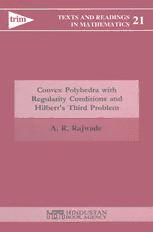
Convex Polyhedra with Regularity Conditions and Hilbert’s Third Problem

Alcatel OneTouch Pop 7 User guide
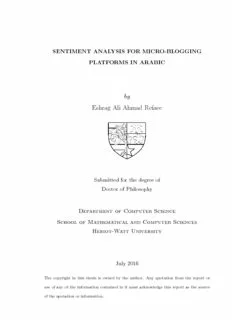
by Eshrag Ali Ahmad Refaee

The Art of Whittling: Classic Woodworking Projects for Beginners and Hobbyists
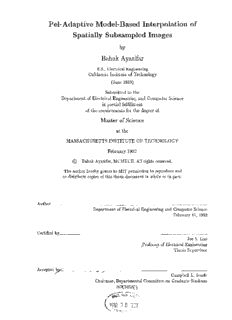
by
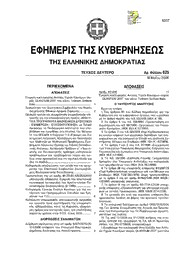
Greek Government Gazette: Part 2, 2006 no. 625

DTIC ADA523780: Fluid Mud in Energetic Systems: FLUMES
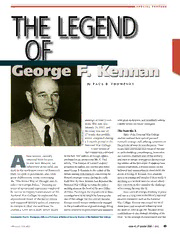
DTIC ADA523062: The Legend of George F. Kennan
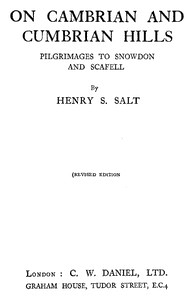
On Cambrian and Cumbrian Hills: Pilgrimages to Snowdon and Scafell by Henry S. Salt

c 2009 by Kyoungsoo Park
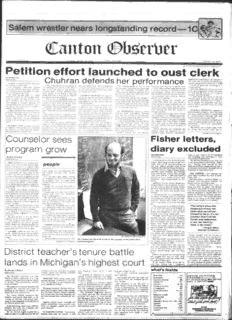
C anton (©bsferVitr
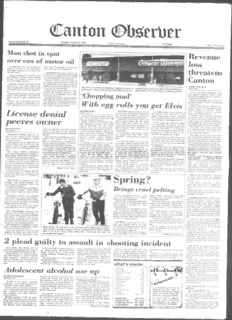
C anton O bsierber
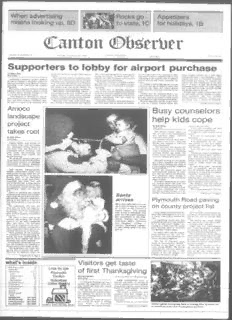
C anton €>bserUer Supporters to lobby for airport purchase
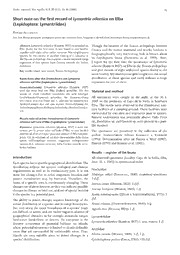
Short note on the first record of Lymantria atlantica on Elba
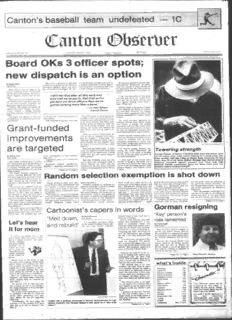
C anton €>bSerUer Board OKs 3 officer spots; new dispatch
